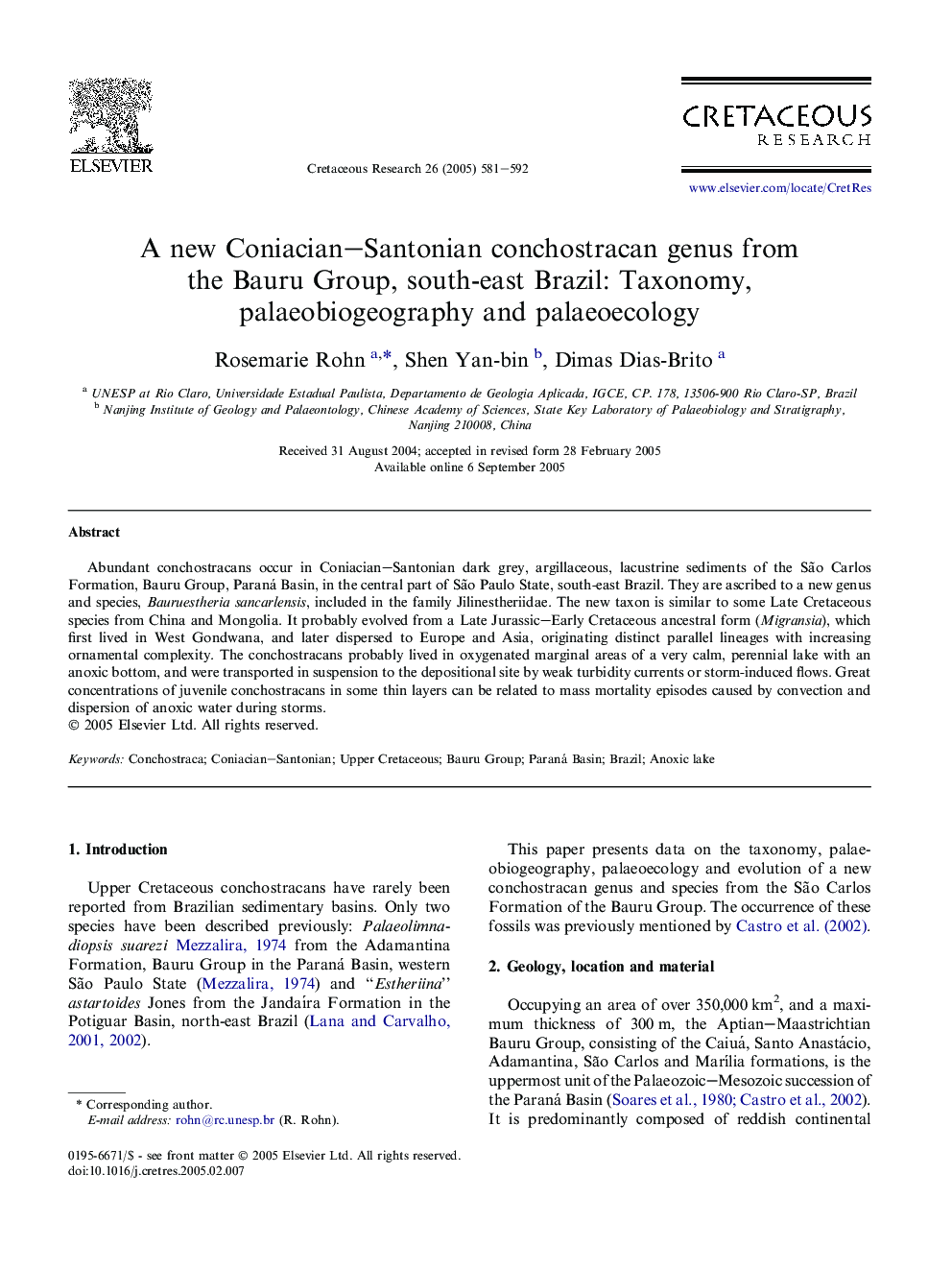| Article ID | Journal | Published Year | Pages | File Type |
|---|---|---|---|---|
| 9539051 | Cretaceous Research | 2005 | 12 Pages |
Abstract
Abundant conchostracans occur in Coniacian-Santonian dark grey, argillaceous, lacustrine sediments of the São Carlos Formation, Bauru Group, Paraná Basin, in the central part of São Paulo State, south-east Brazil. They are ascribed to a new genus and species, Bauruestheria sancarlensis, included in the family Jilinestheriidae. The new taxon is similar to some Late Cretaceous species from China and Mongolia. It probably evolved from a Late Jurassic-Early Cretaceous ancestral form (Migransia), which first lived in West Gondwana, and later dispersed to Europe and Asia, originating distinct parallel lineages with increasing ornamental complexity. The conchostracans probably lived in oxygenated marginal areas of a very calm, perennial lake with an anoxic bottom, and were transported in suspension to the depositional site by weak turbidity currents or storm-induced flows. Great concentrations of juvenile conchostracans in some thin layers can be related to mass mortality episodes caused by convection and dispersion of anoxic water during storms.
Related Topics
Physical Sciences and Engineering
Earth and Planetary Sciences
Palaeontology
Authors
Rosemarie Rohn, Shen Yan-bin, Dimas Dias-Brito,
